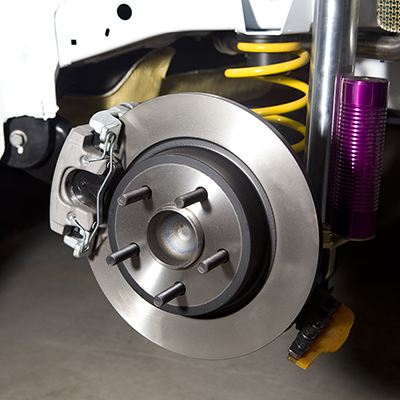How to Use a Car Jack and Jack Stands

Last updated September 7, 2023
Many DIY car repairs require you to reach the underside of your car. It is essential to know how to use car jacks safely in order to perform car repairs without worrying about the vehicle falling. This guide reviews how to use a car jack as well as how to use jack stands.
Before jacking up your car, you must take safety measures to secure it. First and foremost, never use the jack to hold the car in place while you are under it. Use only jack stands that are properly rated for the weight of your vehicle.
Difficulty:
Beginner
Duration:
Under 2 hours
Table of Contents
Park and Secure the Car
Place the Jack and Raise the Car
Place the Jack Stands
Lower the Car
Use a Set of Ramps (Optional)
Park and Secure the Car
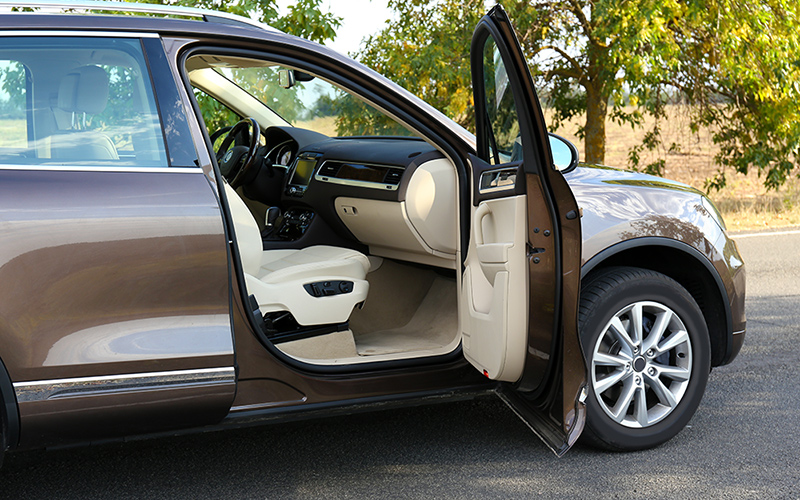
- Park the car on level ground on a paved surface, if possible. If you have to park on an incline, park close to the curb and turn the wheels inward.
- Block the downside wheels with wheel wedges, wood blocks or bricks to prevent the wheels from accidentally rolling. If you’re lifting the front of the car, chock the back wheels, or vice versa.
- Put the car in park and engage the emergency brake. If the car is a manual transmission, put it in first gear, still engaging the parking brake.
Safety: Never use a car jack on dirt or grass when changing a tire or making repairs. If needed, use car jack accessories such as stabilizer pads to ensure the jack is secure.
Place the Jack and Raise the Car
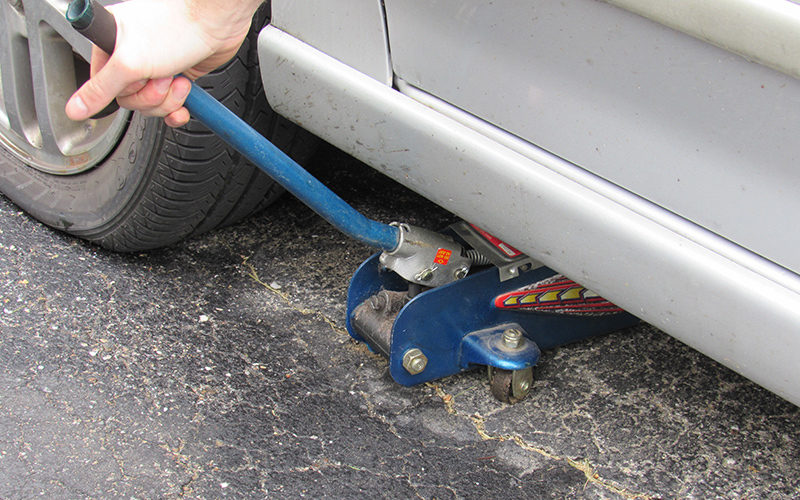
- When using jacks and jack stands, make sure that they have adequate weight capacity for your vehicle. Using tools with a capacity of at least 50 percent of the vehicle weight is recommended.
- Check your owner's manual for the proper placement of the jack. Position the jack under the car frame. If you only need to lift one wheel, lift just that corner of the vehicle. If you need to lift the front or rear of the car, choose a jack point at the center of the front or rear suspension or frame.
- When using jack stands, have them ready near the jack so they’ll be close by when you need them.
- The two basic types of jacks are scissor jacks and hydraulic jacks, which can include hydraulic floor jacks, bottle jacks and ram jacks.
- If you have a scissors jack, insert the rod and then crank, raising the jack until it connects with the car’s lift point.
- If you have a hydraulic jack, place the handle into the body of the jack and pump the handle smoothly to raise the jack until it contacts the car frame.
- Lift the car to the desired height or ground clearance.
Place the Jack Stands
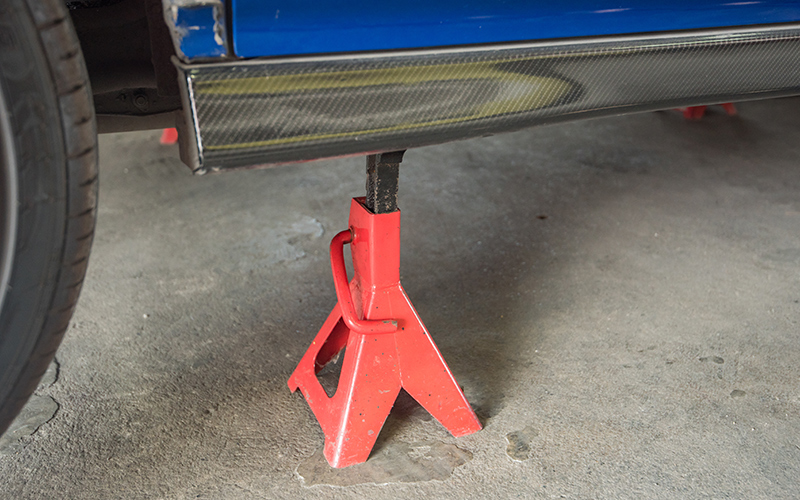
- Place the jack stand under the car frame at reinforced point or "pinch weld" near where the jack is placed.
- Pin-type jack stands use locking pins to adjust the height, while screw-type jack stands use adjustable screws.
- When using a jack stand to support one corner of a vehicle, place it under the jacking point, adjust the stand’s height and use the pin or screw (or pawl in some cases) to lock it in place according to manufacturer’s instructions.
- Once the jack stand is locked in place, slowly lower the car to rest on the stand.
- When supporting the front or rear of the vehicle, use a pair of jack stands by the same method, set at equal heights.
- When raising a whole car on four jack stands, first lift and support the front of the car with the first pair, then lift and support the rear of the vehicle with a second pair.
- When the vehicle is in place, remove the jack and give the car a gentle push to ensure that the jack stands hold the car securely off the ground.
Safety tip: Do not attempt to substitute boxes, wood stacks or bricks for a jack stand. The stand is built to securely hold the weight.
Lower the Car
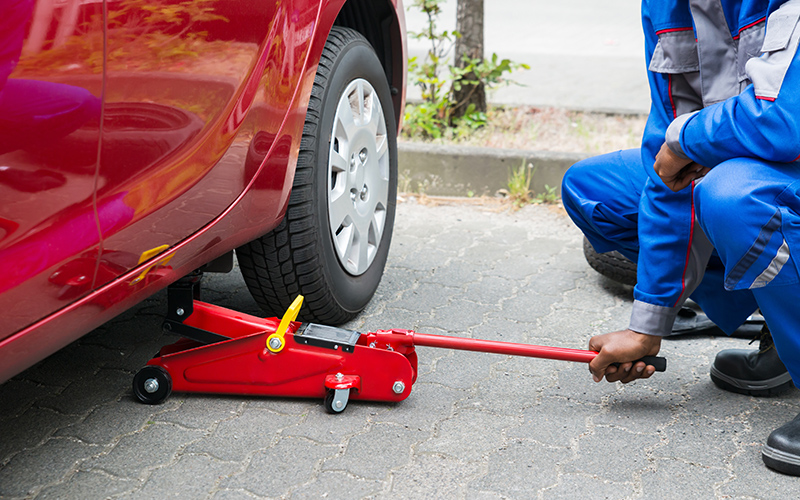
- When you've completed your work, use the jack to raise the car higher by an inch or two and remove the jack stands.
- Slowly turn the handle or crank of the jack counterclockwise to lower the car gently.
- Remove the wheel chocks or wedges.
Use a Set of Ramps (Optional)
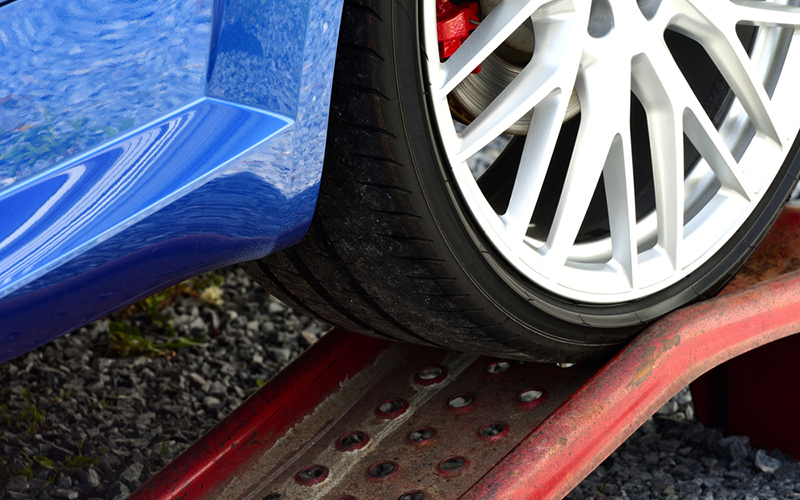
- Rather than jacking up a car, another option for raising a vehicle is to use a set of car ramps. They are safer and easier to use than a jack and jack stands. All you have to do is drive forward or back up onto the wheel ramp to lift one end of the car.
- Wheel ramps also eliminate having to use wheel wedges to block the opposite wheels and they hold the car securely.
- However, wheel ramps are more costly than a jack. Also, wheel ramps aren't an option when you need to change a tire.
Knowing how to use a car jack and jack stands properly can ensure that you can safely perform DIY car repair tasks such as changing a tire and others. Using car lifts or car ramps also offer safe options, but may not be as affordable or practical in some cases. Car jacks and jack stands make it easier for you to care for your car or truck.
Looking for a car jack, jack stands or tools to repair your car? The Home Depot delivers online orders when and where you need them.
